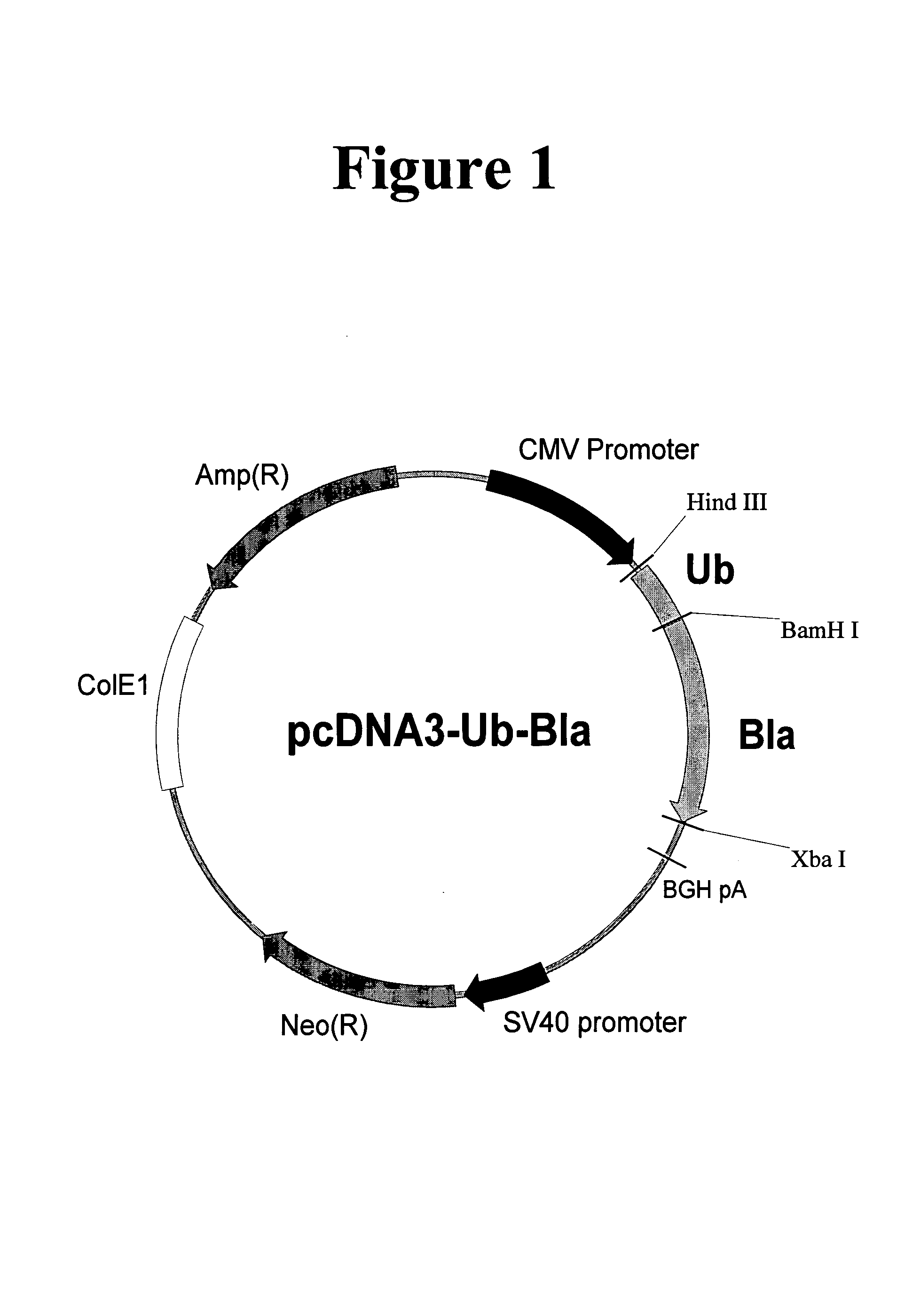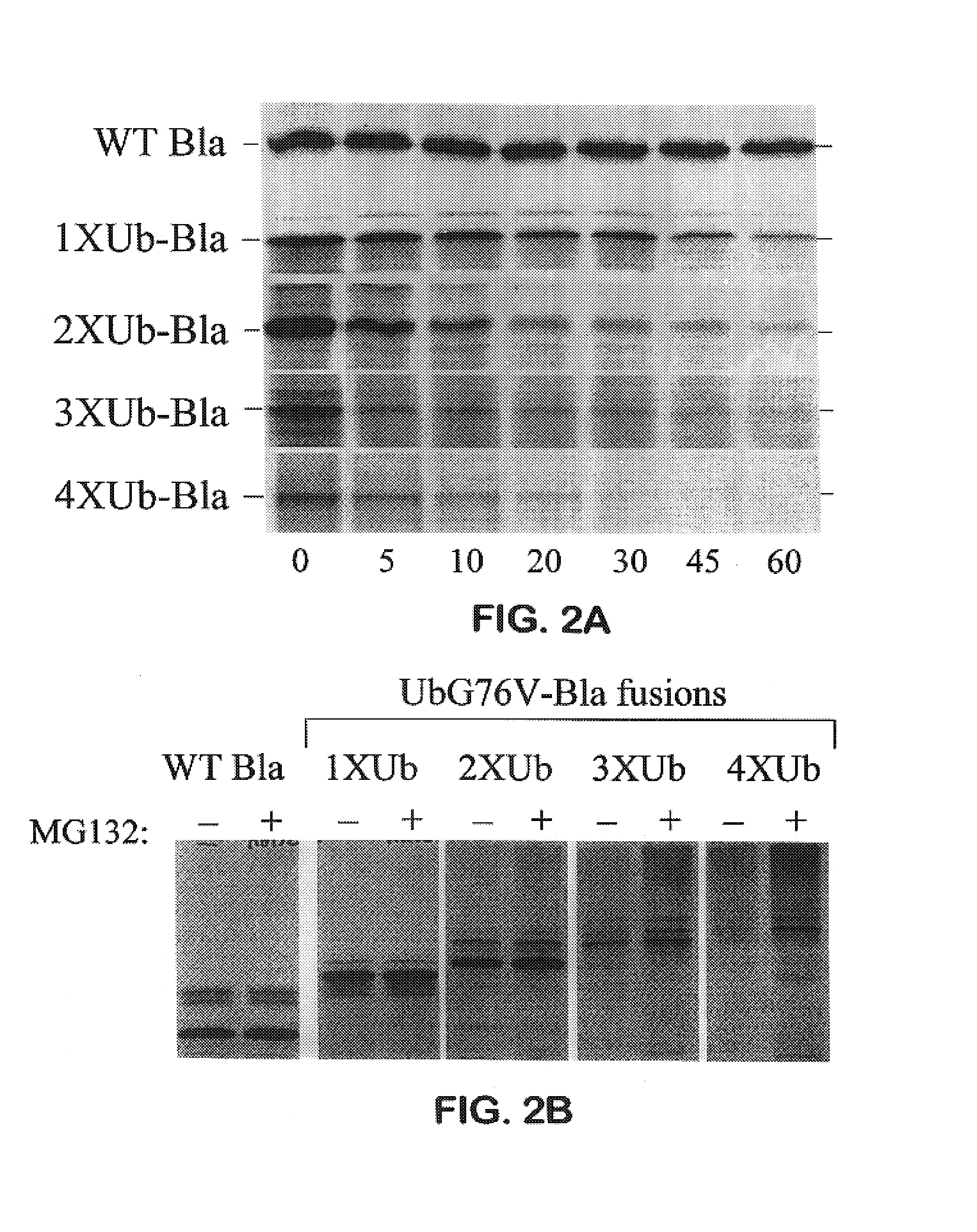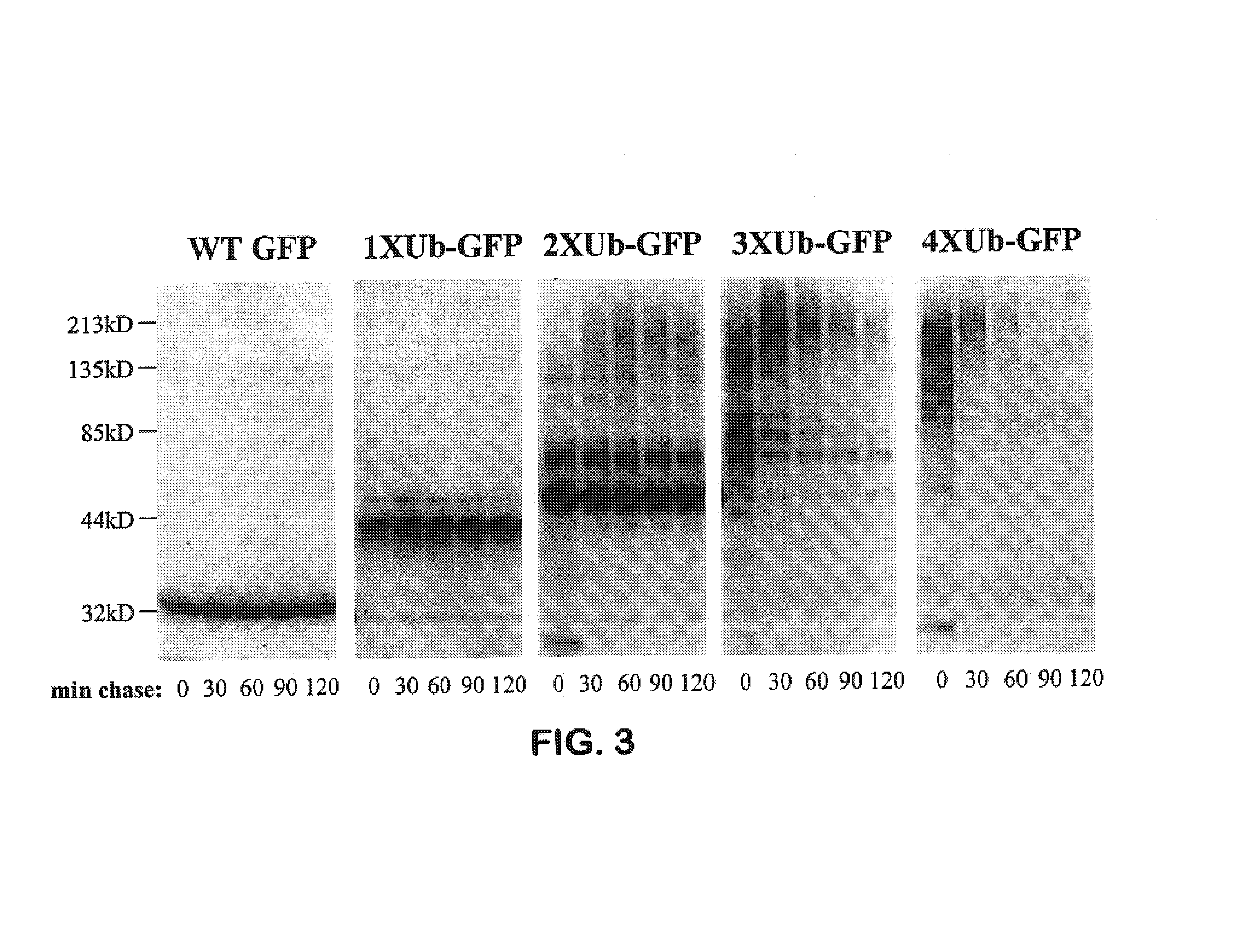Methods of protein destabilization and uses thereof
a protein destabilization and protein technology, applied in the field of protein analysis, can solve the problems of less robust methods, less facile or advanced reciprocal abilities for studying rna and protein molecules, and high cost and time-consuming and expensive genetic analysis of vertebrate organisms
- Summary
- Abstract
- Description
- Claims
- Application Information
AI Technical Summary
Benefits of technology
Problems solved by technology
Method used
Image
Examples
example 1
Generation of Multimerized Destabilization Domains
[0194]The cDNA encoding human ubiquitin was isolated from a human genomic DNA preparation obtained from Jurkat cells by polymerase chain reaction (PCR) using the PCR primers Ubi5 (SEQ. ID. NO. 15) and Ubi3 (SEQ. ID. NO. 16) and cloned into pBluescript H vector (Stratagene). The C-terminal residue of ubiquitin was altered from glycine to valine by site-directed mutagenesis (Kunkel) in order to generate a mutant form of ubiquitin that cannot be cleaved by cellular α-NH-ubiquitin endopeptidases. This mutant is hereafter referred to as ubiquitinG76V (SEQ. ID. NO. 17). The ubiquitinG76V (SEQ. ID. NO. 17) mutant was then amplified by PCR using the oligonucleotide primers Ub5′ (SEQ. ID. NO. 18) and Ub3′, (SEQ. ID. NO. 19). These primers introduce a Bgl II restriction site at the 5′ end of the coding sequence and a BamH I site at the 3′ end of the coding sequence. The PCR fragment from the reaction was digested with Bgl II and BamH I and lig...
example 2
Creation of Multimerized Destabilization Domain-β-Lactamase Fusion Proteins
[0195]The gene encoding the E. coli TEM-1 β-lactamase was isolated from the plasmid pBluescript (Stratagene) by polymerase chain reaction (PCR) amplification using the PCR primers BLA5 (SEQ. ID. NO. 20) and ABSC107, (SEQ. ID. NO. 21) resulting in the deletion of the signal sequence and introduction of a BamH I restriction site and the amino acids below at the 5′ end of the coding sequence.[0196]BamH1 HHSGAWLHPETLVKYK (SEQ. ID. NO:73)
[0197]Amino acids in bold represent original β-lactamase coding sequence, underlined amino acids represent the BamH I restriction site. An Xba I site was inserted at the 3′ end of the coding sequence. The PCR fragments from these reactions were digested with BamH I and Xba I and ligated into pcDNA3 (Invitrogen) via the same sites. The resulting construct, pcDNA3-B1a (SEQ. ID. NO. 22), was then used to create in-frame fusions with the multimerized ubiquitinG76V constructs above. Th...
example 3
Creation of Multimerized Destabilization Domain-Naturally Fluorescent Protein Fusions
[0198]The gene encoding the GFP mutant Emerald (S65T, S72A, N149K, M153T, I167T) (SEQ. ID. NO. 28) was amplified by PCR using the oligonucleotides GFP5′ (SEQ. ID. NO. 29) and GFP3′, (SEQ. ID. NO. 30). The resulting PCR product had a BamH I restriction site at the 5′ end of the coding sequence and a Xba I site at the 3′ end of the coding sequence. The PCR fragment from this reaction was digested with BamH I and Xba I and ligated into pcDNA3 via the same sites. The resulting construct, pcDNA3-GFP was then used to create in-frame fusions with the multimerized ubiquitinG76V constructs described above. This was achieved by digesting the pcDNA3-1-4XUb-B1a constructs (SEQ. ID. NOs. 23 to 26) with the restriction enzymes BamH I and Hind III, and then ligating the fragment encoding the various multiUb destabilization domains via the same sites into the pcDNA3-GFP construct. These constructs were named pcDNA3...
PUM
| Property | Measurement | Unit |
|---|---|---|
| concentrations | aaaaa | aaaaa |
| pH | aaaaa | aaaaa |
| pH | aaaaa | aaaaa |
Abstract
Description
Claims
Application Information
 Login to View More
Login to View More - R&D Engineer
- R&D Manager
- IP Professional
- Industry Leading Data Capabilities
- Powerful AI technology
- Patent DNA Extraction
Browse by: Latest US Patents, China's latest patents, Technical Efficacy Thesaurus, Application Domain, Technology Topic, Popular Technical Reports.
© 2024 PatSnap. All rights reserved.Legal|Privacy policy|Modern Slavery Act Transparency Statement|Sitemap|About US| Contact US: help@patsnap.com










